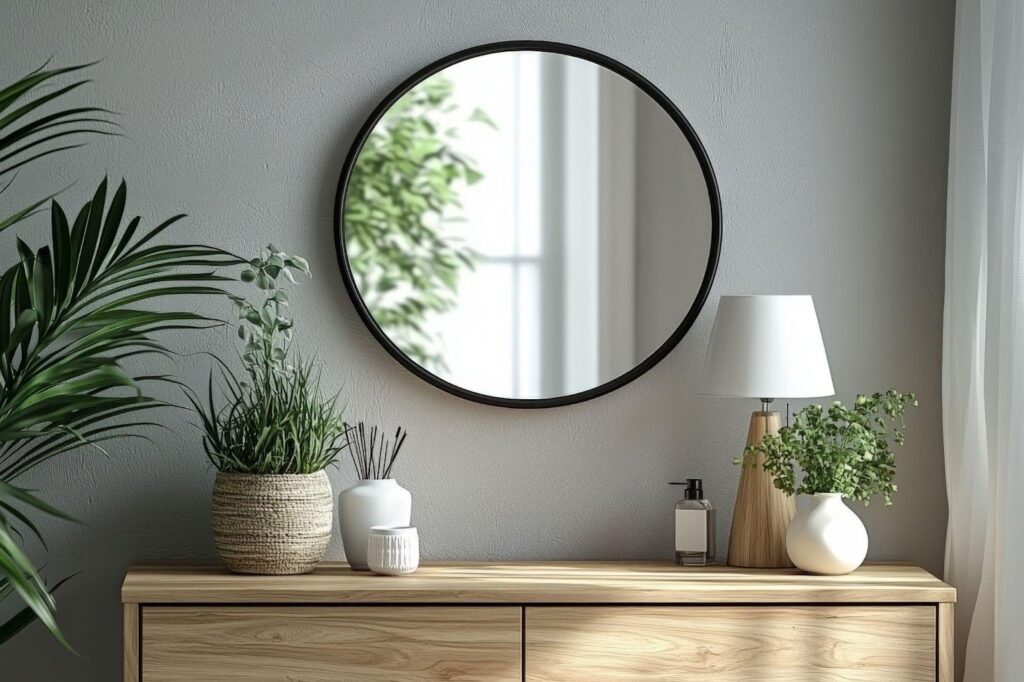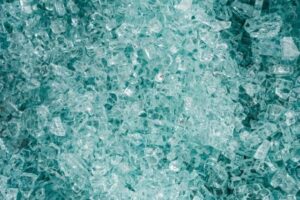Glass surrounds us in countless forms throughout our homes, offices, and public spaces. Two of the most commonly used types are window glass and mirror glass — both made with care and precision, but each with its own unique function.
Window glass provides visibility, insulation, and protection from the elements, while mirror glass reflects light and images with perfect clarity. Understanding the differences between these two types of glass will help you make smarter choices when it comes to upgrades, renovations, or custom designs.
In this blog, we’ll explore how window and mirror glass is made, where it’s most often used in daily life, and how to determine which type best suits your specific needs.
Whether you’re revamping a bathroom, designing a storefront, or simply learning more about what makes glass so versatile, you’re in the right place.
What is window glass?
Window glass provides visibility, insulation, and protection in residential and commercial homes and buildings. It’s most commonly made from float glass, a process that produces smooth, uniform sheets by floating molten glass on a bed of molten tin. This method results in a flat, transparent surface ideal for windows.
Several types of window glass exist to choose from.
Annealed glass
This is the most basic type; it gets cooled slowly to relieve internal stresses. It’s cost-effective but breaks into sharp shards.
Tempered glass
Tempered glass is heat-treated to increase strength and, when broken, crumbles into small, safer pieces. We commonly use it in doors and commercial settings.
Laminated glass
Laminated glass consists of two or more layers of glass bonded with an interlayer, providing soundproofing and security.
Insulated glass units (IGUs)
Insulated glass units (IGUs) feature two or more panes separated by a sealed space, improving thermal performance.
Low-emissivity (Low-E) glass
Low-emissivity (Low-E) glass has a thin coating that reflects heat and UV rays, enhancing energy efficiency.
Whether you’re outfitting a home, office, or retail space, window glass plays a critical role in your building’s comfort, appearance, and energy performance.
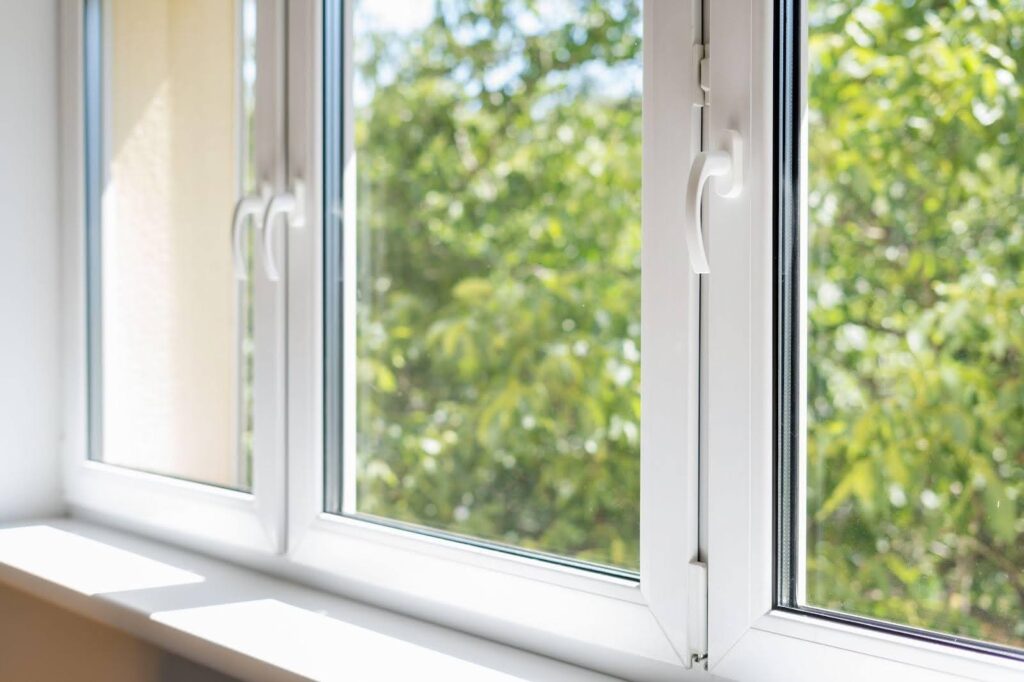
What is mirror glass?
Mirror glass has a reflective coating — typically a thin layer of metal — on one side to create a clear, bright reflection. While it starts as standard flat glass, it becomes a mirror through a process called silvering, where aluminum or silver is applied to the back surface and sealed with protective layers.
Unlike window glass, designed for transparency and durability, mirror glass is made for reflection and clarity. Its primary role is to accurately reflect the images in front of it without distortion.
Whether functional or decorative, mirror glass is a key element in interior design, offering utility and visual appeal across various settings.
Everyday uses for window glass
Exterior windows
The most familiar use is in exterior windows for homes, offices, and vehicles. Window glass provides a clear view of the outside while offering a barrier against wind, rain, dust, and debris. Modern advancements, such as double- or triple-paned insulated glass, also improve energy efficiency by maintaining indoor temperatures and reducing noise.
Interior glass walls and partitions
Designers of open-concept homes and modern offices frequently use window glass to create transparent partitions. This allows for defined spaces without sacrificing the flow of natural light, helping interiors feel larger and more inviting.
Doors and sliders
Glass is often used in doors — like sliding patio doors, storm doors, or French doors — to provide visibility and aesthetic appeal. In commercial settings, storefront glass doors help attract customers by offering a clear view of the interior.
Skylights
Designers also use window glass in skylights to bring natural light into spaces without access to exterior walls. These overhead windows improve ambiance and reduce the need for artificial lighting.
Greenhouses and sunrooms
Greenhouses and sunrooms require clear window glass, as this allows plants to thrive and homeowners to enjoy a warm, bright space year-round.
Automotive use
Car and truck windows use tempered or laminated window glass to protect passengers while ensuring visibility. Automotive glass is engineered for safety and resilience under impact or sudden temperature changes.
Decorative panels and cabinetry
Designers also use window glass decoratively in kitchen cabinets, curio displays, and other built-ins. Frosted, tinted, or textured varieties can balance openness with privacy.
From function to form, window glass is a versatile material that continues to shape how we build, work, and live daily.
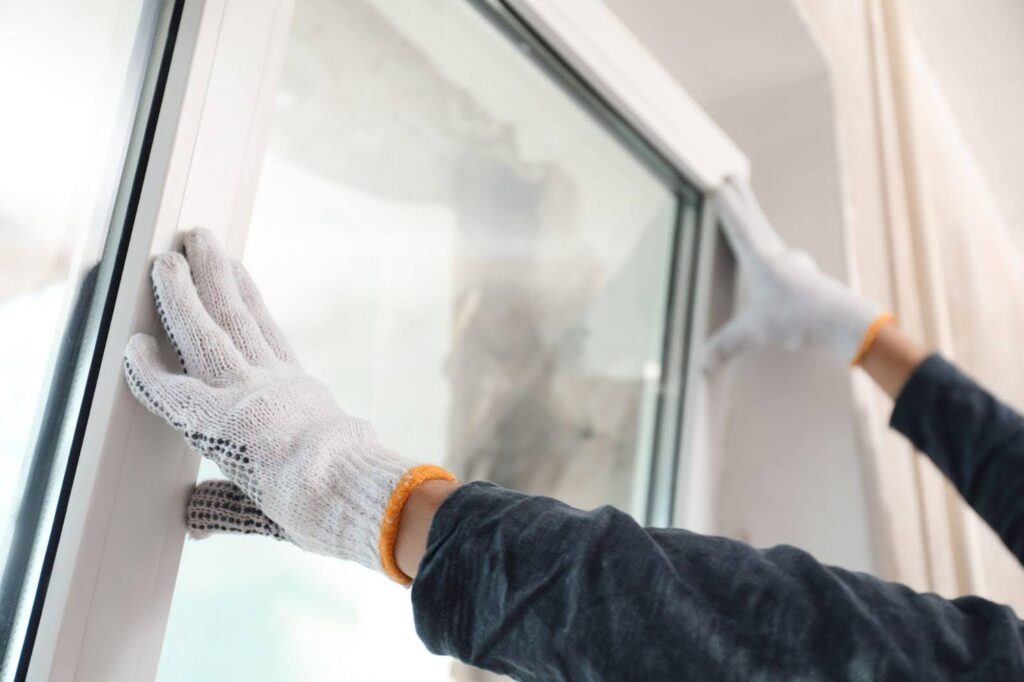
Everyday uses for mirror glass
Contrary to popular belief, mirror glass isn’t only for checking your reflection. It’s a versatile material used in homes, businesses, and public spaces to enhance functionality, design, and light. Its reflective surface makes it a powerful tool for both practical and aesthetic purposes.
Here are some of the most common everyday uses for mirror glass:
Bathroom mirrors
The most familiar use of mirror glass is in bathrooms for grooming, skincare, and daily routines. These mirrors are often mounted above sinks and vanities and come in various shapes, sizes, and styles.
Closet and wardrobe doors
Full-length mirrors are commonly integrated into sliding closet doors or mounted on bedroom walls. They’re perfect for outfit checks and make small spaces feel larger by reflecting light and giving the illusion of depth.
Interior design and decor
Interior designers frequently use mirror glass to brighten and visually expand rooms. Decorative wall mirrors, mirrored accent furniture, and mirror-backed shelves all help create a sense of openness while adding a polished, modern touch.
Fitness and dance studios
In gyms, yoga spaces, and dance studios, mirror glass covers walls to help individuals monitor posture and form. These large mirrors are essential for technique training and improving performance in physical activities.
Retail and fitting rooms
Mirror glass is a staple in retail environments, especially in dressing rooms where customers try on clothing. Large, high-quality mirrors help enhance the shopping experience and influence buying decisions.
Elevator interiors
Mirrored panels are often used in elevators to make the space feel less confined and to provide visual interest. They also allow people to check their appearance during transit.
Safety and surveillance
We often see convex mirror glass in parking garages, warehouses, and around tight corners to improve visibility and reduce the risk of collisions. Mirror glass is also used in two-way mirrors for discreet observation in security settings.
Furniture and cabinetry
You’ll find mirrored glass in headboards, coffee tables, drawer fronts, and cabinet inserts, lending a luxurious and reflective quality to furniture design.
Art and custom installations
Mirror glass is used in custom art pieces and installations to play with reflection and light. It’s a popular choice for designers seeking a dramatic, contemporary effect in both residential and commercial interiors.
From practical applications to decorative accents, mirror glass is a stylish and functional material that serves countless roles in daily life. Whether you’re elevating a space or improving utility, mirrors offer an easy way to reflect your personal style.
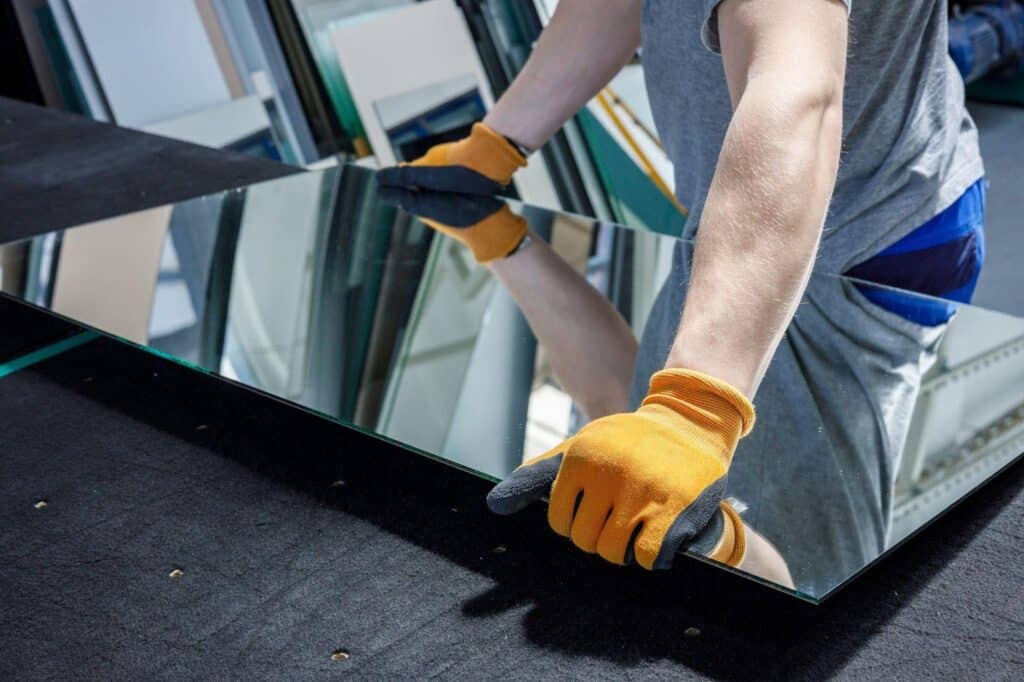
When to use which type of glass
Both window glass and mirror glass play unique roles in residential, commercial, and industrial settings. Understanding when to use each type can help you make informed choices about your space, whether you’re planning a renovation, new build, or simply upgrading a feature in your home or office.
When to use window glass
We recommend using window glass for exterior windows, interior partitions, doors, glass railings and balconies, greenhouses and sunrooms, and skylights and roof panels. Window glass is best when your goal is to let light in, maintain visibility, and protect against the elements or impacts.
When to use mirror glass
Opt for mirror glass when you need reflection, depth, and light enhancement. It’s most effective indoors and typically found in decorative or utility settings.
- Bathrooms and dressing areas: For grooming, makeup, and outfit checks.
- Closets and bedrooms: To make small rooms feel larger and to serve as full-length mirrors.
- Gyms, studios, and retail spaces: To help users monitor movement and posture or try on clothing.
- Hallways and entryways: To reflect light and create a more spacious feel.
- Furniture and cabinets: To add elegance and reflect ambient light in stylish interiors.
- Wall features and art installations: For visual interest and modern flair.
- Surveillance or safety applications: With specialized two-way or convex mirror types.
Use mirror glass when your goal is to reflect, illuminate, or visually expand a space, or simply to provide a functional mirror surface.
Choosing the right glass for the job
If you’re still unsure which to choose, ask yourself:
- Do I need transparency or reflection?
- Is it for exterior or interior use?
- Do I want to increase light, visibility, privacy, or design impact?
When in doubt, a Utah glass company can help you evaluate your needs and recommend the perfect solution tailored to your space.
Whether you’re working with window glass or mirror glass, knowing when to use each helps ensure beauty, function, and long-term value in your project.
Upgrade your glass with Murray Glass, your Utah glass company
When it comes to selecting the perfect glass for your home or business, trust the team that knows glass inside and out. At Murray Glass, we specialize in crafting and installing everything from crystal-clear window glass to beautifully tailored mirror glass — each piece designed to match your vision and elevate your space.
With years of experience, custom capabilities, and a reputation for exceptional service, Murray Glass is your Utah glass company — your one-stop shop for all things glass. Whether you’re planning a home improvement project, need a replacement, or simply want to enhance your space with custom glasswork, we’re here to help.
Contact Murray Glass today to schedule a free consultation and learn how our expertise can bring clarity, beauty, and function to every corner of your home or business.


